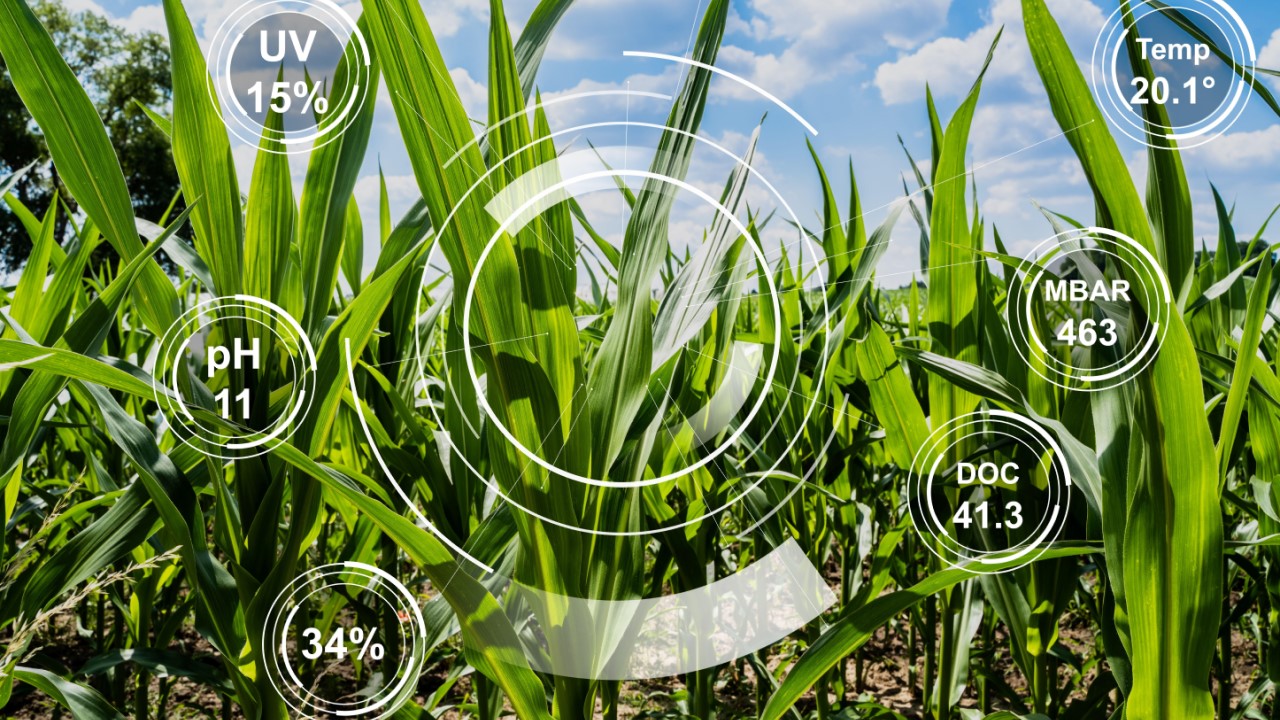This Is Not a Simulation: How Cloud-Based Solutions Help Farmers Improve Every SeasonThis Is Not a Simulation: How Cloud-Based Solutions Help Farmers Improve Every Season
The agriculture industry has been using GPS connectivity for decades, but faster and more persistent connectivity is needed to allow farmers to use autonomous technology.
July 29, 2024

Imagine you have a perfectly square and level field with a never-ending supply of seeds, nutrients, time, and labor to produce an optimal crop. That may be the case in the virtual worlds of FarmVille and Stardew Valley, but it’s certainly not the case on a real farm. In reality, farmers operate in irregularly shaped fields with diverse terrain that have to be worked quickly and efficiently with limited resources.
Farming simulations do get some of the basics of plowing, planting, nurturing, and harvesting crops right, but they oversimplify the real-world complexities farmers face. They also overlook the ways cloud-based technologies are rapidly transforming modern agriculture by giving farmers access to up-to-date information anytime and from anywhere.
Data-enabled decisions in agriculture
Every decision a farmer makes – from the type of fertilizer they use to when to put seeds in the ground – has an impact on the overall success of the season. And the stakes of all those decisions are incredibly high.
With the world population expected to reach 10 billion by 2050, farmers will soon need to produce 50% more food. Adding to the challenge, the agriculture industry faces a well-documented labor shortage that is unlikely to end soon, with overall employment of U.S. agricultural workers projected to grow by just 1% from 2019 to 2029.
Precision agriculture machines connected to the cloud can help farmers be more productive with fewer workers. One of the benefits of these machines is they provide real-time data and insights on things like machine job quality, so if a farmer can get a heads-up on machine issues, they can be proactive with maintenance to avoid any downtime.
A closer look at data throughout the growing season
Farmers are excellent record keepers. To maintain prosperous harvests, they've always kept detailed data on the performance of their fields. Traditionally, they collected the data manually, a time-consuming process that takes valuable hours away from more pressing work. But today, advanced machines can gather masses of real-time data, sort it automatically, and store it securely in the cloud. Then, often with the help of trusted third-party advisors, farmers can analyze the data to make timely, informed decisions throughout the year with the touch of a button on any mobile or desktop device.
At the start of each growing season, farmers can use previous years’ data to strategically plan where and when to plant seeds, identifying the areas of the field where plants often grow strongly or are typically not as prosperous. From there, planters equipped with robotics, sensors, and camera vision, augmented with field boundaries, guidance lines, and other data provided from the cloud, can precisely place hundreds of seeds per second at an optimal depth and with optimal spacing, avoiding losses from seeds being planted too shallow, deep, or close to another plant.
Planting is only the first step in a long journey to the eventual harvesting of healthy, abundant crops. Advanced machines gather a wide range of data to support the next step of nurturing plant growth. That data is critical, because while plants are growing, so are weeds. And weeds need to be treated in a timely manner to give crops the best possible conditions to grow.
With access to the prior year’s data, farmers can anticipate where weeds are likely to grow and target them directly. Today’s sprayers use computer vision and machine learning to detect where weeds are located as the sprayer moves throughout a field, applying herbicide only where it is needed. This not only reduces costs but is also more sustainable.
Data collected during the spraying process gives farmers valuable insights into things like the type and density of weeds in an area, the amount of time it takes to spray a certain field, and the amount of time until the machine’s tanks are empty. Farmers can use that data to identify patterns, adjust schedules, and make informed decisions about their agronomic practices, equipment and labor usage.
Furthering autonomy on the farm
Looking ahead, cloud-based data will help power the next leap forward in farming innovation. Fully autonomous machines are already used by farmers to prepare the land before planting, and in the near future, they will impact every major job on the farm.
Today, for tillage, data and the cloud are already making an impact. Farmers can remotely adjust the speed or depth of the tillage tool based on real-time information sent from the machine to the cloud. For example, if the autonomous tractor encounters an obstacle, it will stop, and farmers will receive a notification with a live view from the camera to assess the situation. From there they can make the adjustments needed for the machine to continue its job. With real-time data from the cloud farmers enhance productivity and improve the quality of the tillage job.
The agriculture industry has been using GPS connectivity for decades, but faster and more persistent connectivity is needed to allow farmers to use autonomous technology. The combination of terrestrial and satellite connectivity will allow autonomous machines to work more efficiently and send even more data through the cloud to farmers. With this data, farmers can monitor productivity, reduce downtime, and coordinate among machines for more efficient use of resources.
Farming will always be a 365-day job with long days and no off-season. But with real-time data processed and stored in the cloud, farmers can productively manage their operations from anywhere—be it their office, home, child's dance recital, or on the road to a family vacation—to allow them to enjoy all that life has to offer.
Cloud-based tech on farms now and in the future
The reality of farming is not as simple as a simulation. Fortunately, cloud-based technologies are helping farmers make the complex decisions necessary to produce more food in less time and with fewer workers. By centralizing data in the cloud, farmers can enhance productivity, profitability, and sustainability in their operations today and move with confidence toward the future of fully autonomous farming.
Read more about:
SustainabilityAbout the Author
You May Also Like




